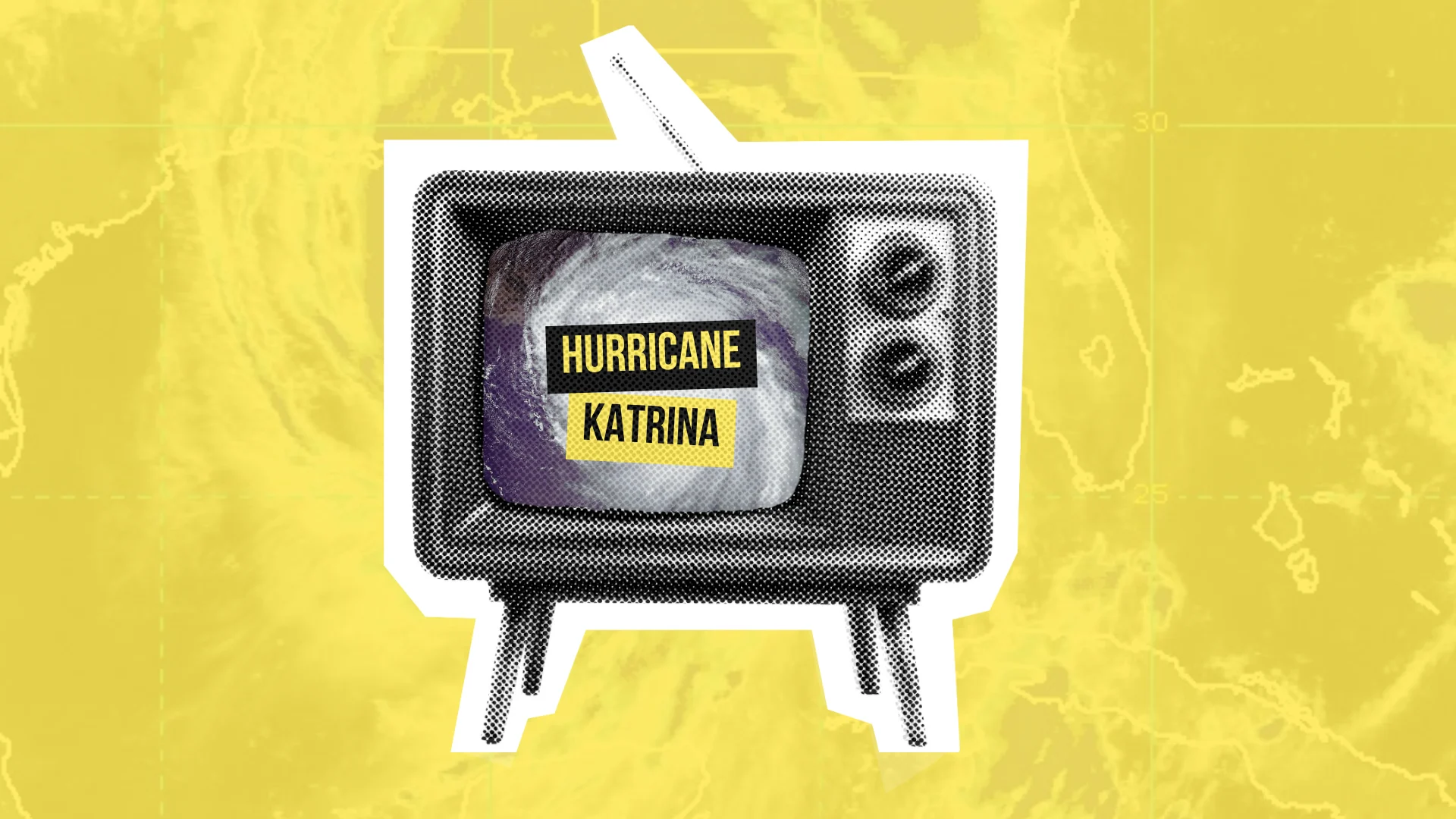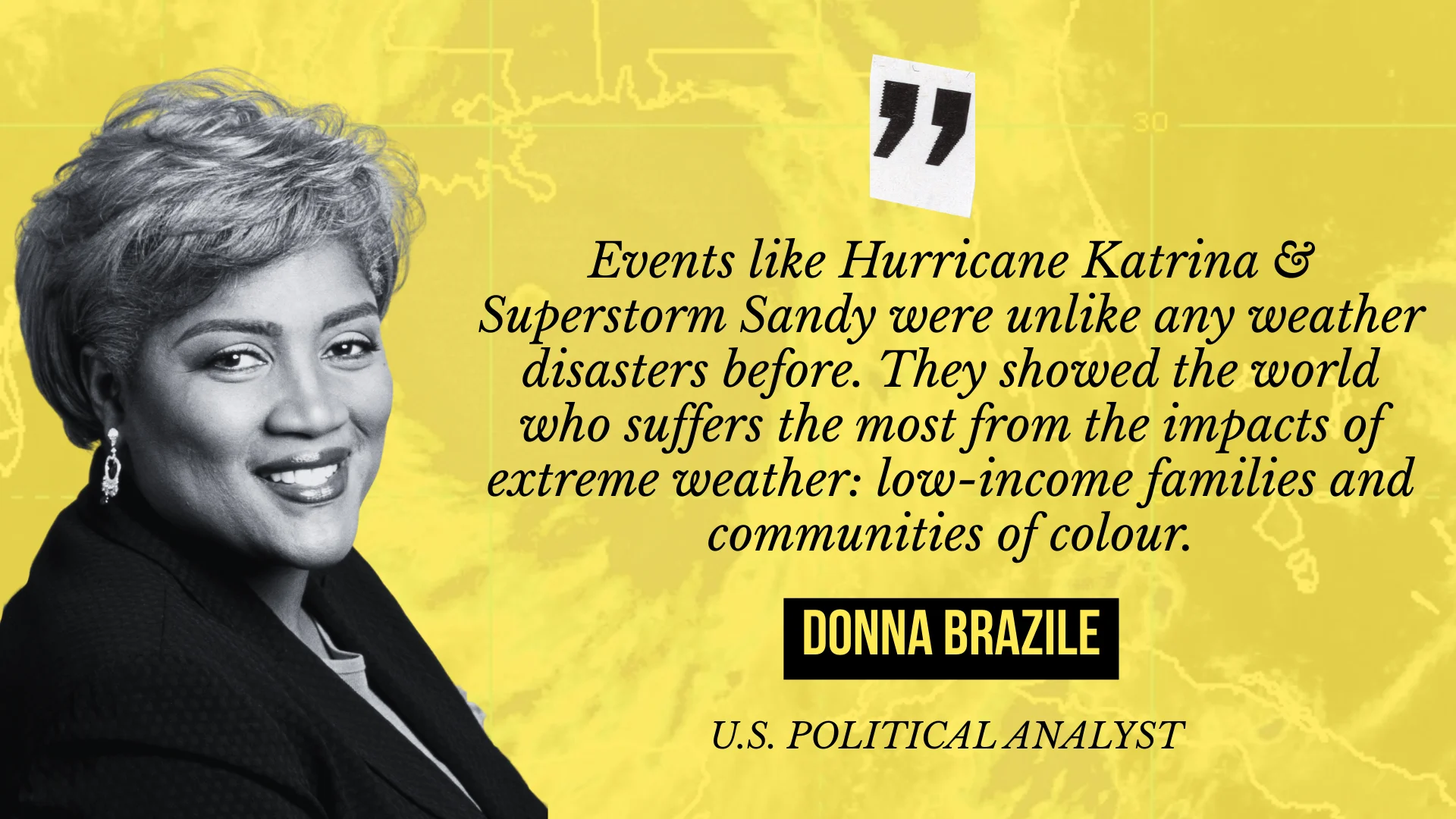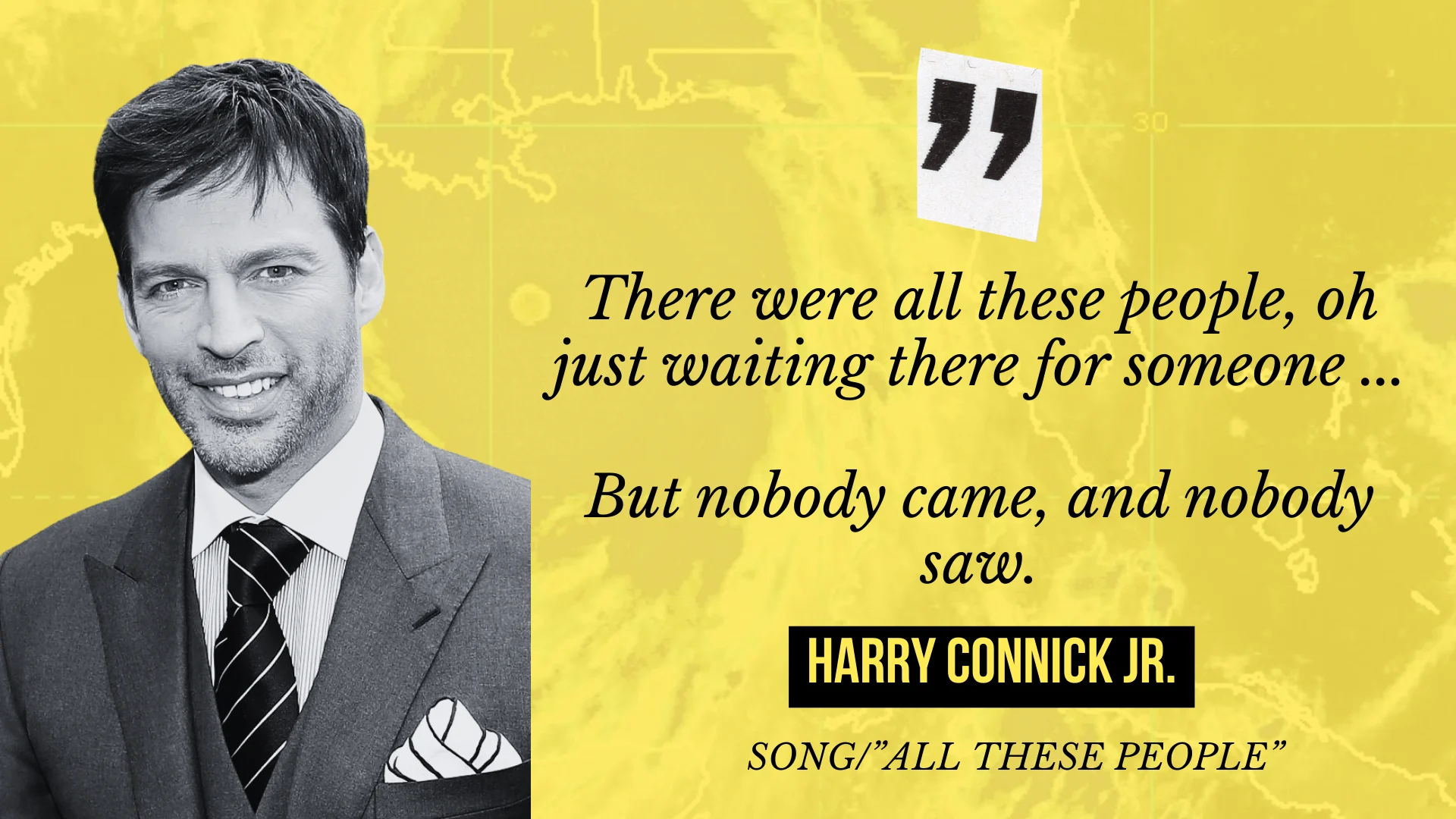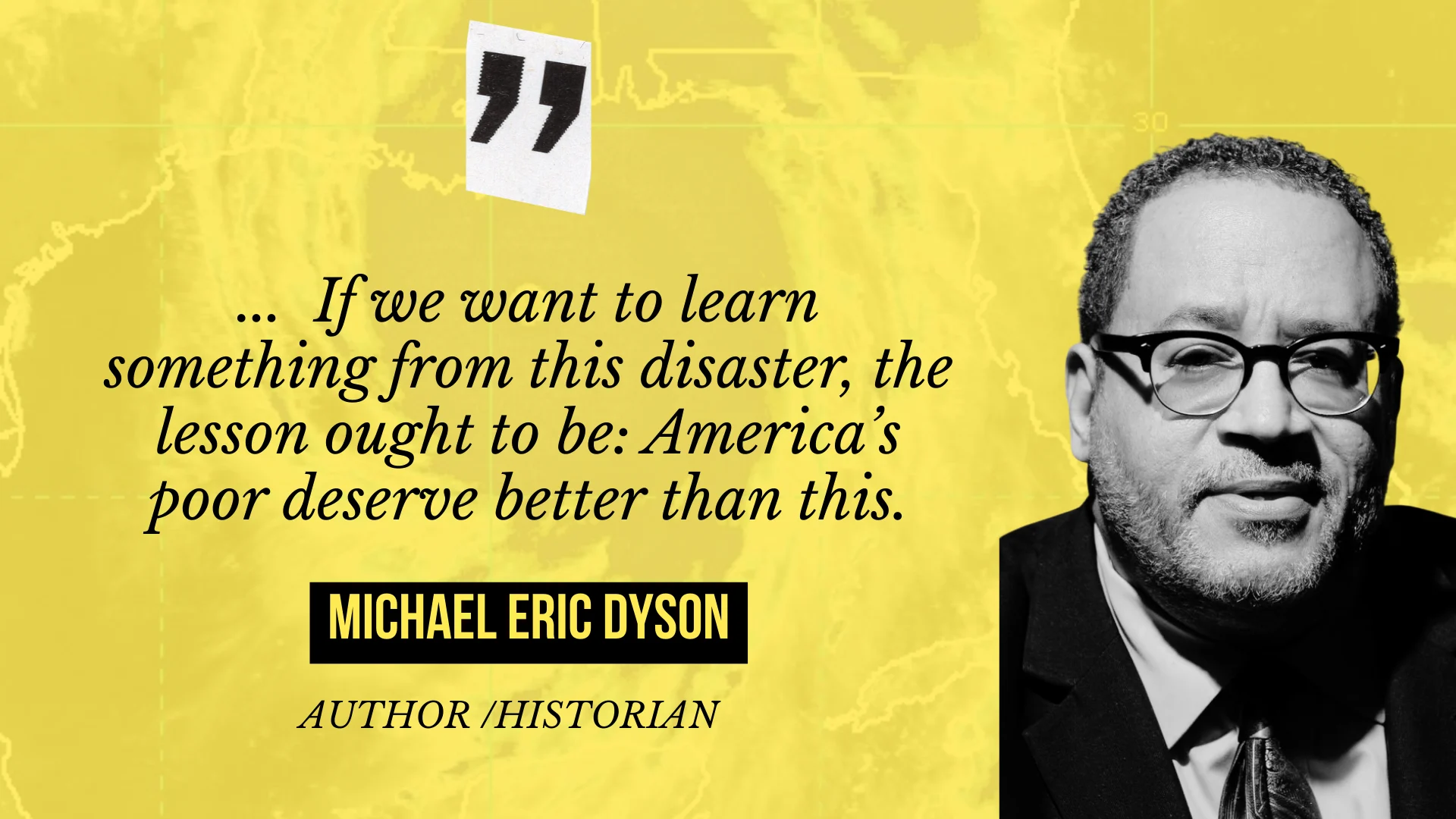
A look back at the cultural impact of Hurricane Katrina
On August 29, 2005, Hurricane Katrina made landfall, marking a pivotal moment in history.
Katrina was one of the deadliest and costliest hurricanes in U.S. history.
But its aftermath reshaped more than just the Gulf Coast: it reframed national conversations about disaster, race, and inequality, and its imprint on the cultural zeitgeist still resonates nearly 20 years later.

Just weeks after the storm, artists from across genres united for Shelter from the Storm: A Concert for the Gulf Coast. It aired across major networks, raising over $30 million in relief. It was Live Aid for the 21st century, a moment where pop culture became public service.

Benicio Del Toro, Jennifer Garner, Jimmy Smits, The Rock, Allison Janney and Reba McEntire at the phone bank during the "Shelter from the Storm: A Concert for the Gulf Coast", the live, commercial-free, one-hour primetime simulcast Friday, Sept. 9, 2005 on all six broadcast networks as well as other programming services domestically and around the world.(Photo by Pool Photographer/FilmMagic via Getty Images)
But no moment would leave a deeper cultural dent than this:

Graphics/elements sourced from Canva Pro. Mike Myers/Kanye West cutouts via video screengrab from televised Hurricane Katrina event that aired on NBC. (Cheryl Santa Maria for The Weather Network)
“George Bush doesn’t care about Black people.”
On September 2, 2005, rapper Kanye West went off script and delivered the now-infamous quote during a live NBC telethon raising money for Hurricane Katrina victims.
Canadian actor Mike Meyers, who was standing beside West at the time, looked over in shock.
The unscripted words—broadcast live—ignited a firestorm. For some, it was inappropriate. For many, it was overdue. It cracked open a national conversation about race, class, and who gets rescued... and who gets left behind.

On September 2, 2005, residents of Detroit gathered downtown to protest what they said was the Bush Administration's slow response to the Hurricane Katrina devastation. (Photo by: Jim West/UCG/Universal Images Group via Getty Images)
DON'T MISS: Visit The Weather Network's hurricane hub to keep up with the latest on tropical developments in Canada and around the world
The media showed us more than destruction. It showed bias—sometimes subtle, often not.
Black survivors were labeled “looters.” White survivors were “finding food.” This wasn’t just a natural disaster. It was a human one.

Graphics/elements sourced from Canva Pro. Donna Brazile photo: Ron Aira/Wikipedia, CC BY-SA 3.0. (Cheryl Santa Maria for The Weather Network)
In the years that followed, culture filled in the gaps that news coverage missed. Spike Lee’s When the Levees Broke was a raw, sprawling, and furious film, serving as an unflinching indictment of government failure.
And Trouble the Water handed the camera to survivors themselves, turning lived trauma into testimony.
Even reality TV stepped in. Extreme Makeover: Home Edition dedicated entire episodes to rebuilding homes for displaced families. It wasn’t just feel-good content; it was catharsis, broadcast in HD.

Graphics/elements sourced from Canva Pro. Harry Connick photo: Wikipedia, CC BY-SA 3.0. (Cheryl Santa Maria for The Weather Network)
In Canada, the ripple effect of Katrina reached radio waves. Stations briefly pulled The Tragically Hip’s song New Orleans Is Sinking from playlists out of respect and discomfort.
Lyrics that once felt abstract hit too close to home.

1989 cover art for The Tragically Hip's New Orleans is Sinking Single Wikipedia/Fair Use).
But Katrina didn’t just influence the media. It changed the language we use to talk about disasters.
Environmental justice. Resilience. Preparedness.
These weren’t mainstream buzzwords—until Katrina made them necessary.
The failures of the U.S. Federal Emergency Management Agency or FEMA, became a case study in bureaucracy gone wrong, still discussed in amademic spaces.
Public trust in disaster response plummeted.
One 2006 study cited a poll of 680 evacuees, 93 per cent of whom were Black and many living below the poverty line, found that 68 per cent believed the response would have been quicker for wealthier white people.
Around 61 per cent of the respondents said the government "does not care about people like them."
These are some examples of how the storm exposed, and forced, uncomfortable truths into the national spotlight.

Graphics/elements sourced from Canva Pro. Michael Eric Dyson photo: Oregon State University/Wikipedia, CC BY-SA 2.0. (Cheryl Santa Maria for The Weather Network)
Culture became a mirror. It processed grief. Amplified outrage. And reminded us that disaster leaves more than debris—it leaves memory.
Nearly two decades later, Hurricane Katrina remains more than a storm. It’s a symbol of failure and resilience.
And of how culture carries pain and power, long after the waters recede.
Header image: Elements sourced from Canva Pro. Hurricane Katrina satellite image: NOAA/Public Domain. Created by Cheryl Santa Maria for The Weather Network.